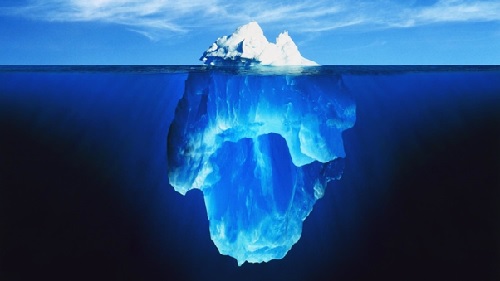
Source: https://www.kaylalewkowicz.com
“What you write on the inside, you will experience it on the outside – The Power of your Subconsious Mind”. ‘Brand Recognition’ and ‘Brand Recall’ are the two factors that drive the entire field of branding. The first is the identidication of a specific brand in a throng of competitors and duplicity, and the second is how a specific brand hits your brain, either consciously or unconsciously, at the time of purchase (call to action), which is even more significant. After going through the buying process step by step, the consumer can do this consciously. Alternatively, it can be done repeatedly by consumers without their knowledge, i.e. ‘unconcsiously’. As a result, it’s more crucial than ever for marketers and brand managers to comprehend the significance and scale of these unconscious purchasing decisions. Recent research has confirmed that brand impressions that are not consciously perceived in the minds of consumers have an impact on their final recall of the brand at the moment of purchase.
The storey begins with the target audience being bombarded with brand-related messages via numerous instruments in order to achieve the same two terms, “Brand recognition” followed by “Brand Recall” at the time of purchase. Consumers will develop “Brand blindness” if they are bombarded with too many brand messages. They become oblivious to the maximum amount of communication sent by businesses. This discovery is extremely similar to the OOH, which is commonly referred to as “Banner blindness”. The obvious cause of this illiteracy is the amount of time a consumer devotes to a single brand message. The shorter the period, the fewer conscious ideas are available. On the other hand, the more time spent on each message, the more conscious thought is possible.
Unconscious branding has roots in neurology, or more precisely, neuromarketing. When customers unconsciously ingest brand information, it must be through their five senses or a mix of two or more of them. Various studies from the area of neuroscience, psychology and behavioral economics have shown a decline in consumer interest in banner ads or television commercials, as well as their level of impatience is clearly visible when they are staring the skipping button on a YouTube ad and wait for 5 seconds to click it or increasing numbers of ad-free premium subscriptions in order to avoid regular advertisements from various marketers. As a result, it is imperative to investigate more and more scope of content marketing (where you are not directly selling, but selling), neuro-marketing, and unconscious branding as a way to get deeper.
We start our investigation of consumer behaviour by assuming that consumers are rational. Is he the one? According to recent studies, today’s customer is not only not rational, but also highly susceptible to the subtle unconscious effect of many things going on around them. Scientists are discovering a plethora of unconscious operating mechanisms behind purchase-related activities as they delve further into neuro-science. To attract their target demographic, brands must grasp this unconscious behaviour.
According to “Subliminal Branding in Milliseconds”, 5 milliseconds of exposure permits our brain to process more conscious information, resulting in a positive brand recall at the call of action. But what if you didn’t have a connection with your customers for 5 milliseconds? We need to know the possible solution with our conscious, sub-conscious, and unconscious mind.
Happy Reading!
Dr. Anuradha Yadav
Assistant Professor
DSCE-MBA
